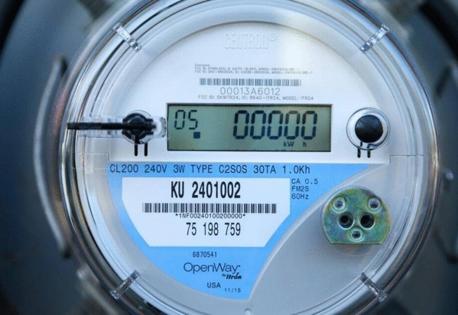Kentucky Utilities wants to raise rates. How much might your electric bill go up?
Published in News & Features
LEXINGTON, Ky. — Kentucky Utilities is asking the Kentucky Public Service Commission to approve a rate hike that would raise base rates for residential customers by 13.6%.
That translates to about $18.15 a month for a residential customer using 1,085 kWh of electricity per month, which is the average for KU residential customers, according to the company.
If approved, the change would provide KU an additional $226.1 million a year, or 11.5% more revenue, according to the filing.
KU filed the application for a rate increase with the PSC May 30, and the new rates likely would not take effect until at least Jan. 1, according to the documents.
The change “is required to enable KU to continue providing safe and reliable service to its customers, and to afford KU a reasonable opportunity to earn a fair return on its investment property used to provide that service while attracting necessary capital at reasonable rates,” the company’s application states.
KU’s sister company, Louisville Gas and Electric, is also asking for a rate increase that would raise electric revenue by 8.3% and gas revenue by 14%.
KU serves 77 Kentucky counties, as well as five counties in Virginia, while LG&E serves Louisville and 16 surrounding counties. They are part of the PPL Corp. and together serve more than 1.3 million customers.
The company said it needs to update aging infrastructure, and extreme weather underscores the need for “system hardening.”
“In 2025 alone, Kentucky has experienced up to three quarters of an inch of ice, 14 inches of snow, extreme cold, more than 30 reported tornadoes and the worst flooding on the Ohio River since 1997,” KU and LG&E said in a recent news release regarding the rate increases.
“For utility providers, including Louisville Gas and Electric Company and Kentucky Utilities Company, stronger, more frequent storms underscore the importance of system hardening to withstand the effects. Already, LG&E and KU’s ongoing system investments for customers have achieved a reduction in power outage frequency by 40% and duration by 30%.
“As the risks of these more severe storms, wildfires and demand for energy continue to rise, LG&E and KU are working to mitigate the threats with stronger wires and poles; increasing vegetation management to further control this leading cause for power outages; and installing advanced technologies to identify and prevent outages.
“Coupled with system enhancements, LG&E and KU are making it even easier for customers to do business. New advanced meter technology gives customers access to near real-time data to better pinpoint savings and manage their energy bills. Behind the scenes, the utilities also are upgrading information technology systems, improving customer billing processes and adding even more protections against cyber-related threats.”
LG&E and KU President John R. Crockett said in a recent news release that “increasing customer bills is impactful and not a decision we take lightly.”
“However, we’re at a tipping point in which the foundational portions of our system – poles, wires, substations and technology – are reaching the end of their useful lives,” he said.
The company said in a news release that, if the rates are approved, they would still be lower than the national average for residential customers.
“Over the last five years, as inflation increased nearly 20% and labor and material costs escalated, LG&E and KU have held down costs and maintained retail rates that are more than 24% below the national average,” the release stated.
In addition to electric rate increases, KU wants to make other changes, such as increasing the charge customers pay to opt out of having an AMI, or advanced metering infrastructure, meter installed, according to the filing.
The company’s filing says it wants paperless billing to be the default for new customers and those for whom it has an email address.
It also hopes to create a new optional “pre-pay program” that would allow electric customers to put funds in their account in advance “to pay for energy as it is used,” KU said in a news release.
The rate change and other changes will have to be approved by the Public Service Commission before they can take effect, and several entities are already making known their desire to have a say in what happens.
The Kentucky Attorney General is intervening in the case. The AG typically takes that action to represent consumers’ interests, often arguing for a decrease in the requested rate.
The Lexington-Fayette Urban County Government has also asked the PSC to allow it to intervene, stating that it has an interest in the case, since it paid more than $13.6 million to KU for electrical service in the last fiscal year.
Walmart has filed a motion to intervene, stating that it has 31 Kentucky retail sites served by KU.
The PSC has already granted the request of Kentucky Industrial Utility Customers to intervene. The association says it represents the interests of some of the largest public utility customers in the state that get their electricity from KU, including Toyota Motor Manufacturing Kentucky, Alliance Coal, Corning, Dow Silicones Corp. and North American Stainless.
The agency said in its filing that the rate increase “will significantly impact the competitiveness of KIUC member companies.”
The Public Service Commission will schedule a hearing in the case to be held later this year.
The last time KU and LG&E requested a rate increase was in November 2020, when they asked to raise rates by $331 million.
In that instance, the cities of Lexington and Louisville and the state attorney general reached an agreement with KU and LG&E to reduce the requested rate by a third.
As part of that settlement, reached in April 2021, KU and LG&E agreed not to ask for another base rate increase for four years.
©2025 Lexington Herald-Leader. Visit kentucky.com. Distributed by Tribune Content Agency, LLC.







Comments